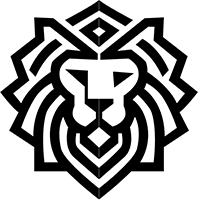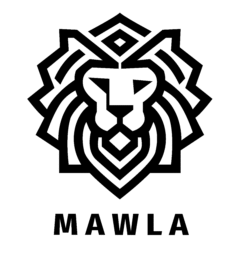Why Do Shia Muslims Pray on a Stone (Turbah)?
Shia Muslims prostrate on a turbah (clay tablet) because the Prophet Muhammad ﷺ and his Companions prostrated directly on natural earth, stones, and palm mats — never on cloth or carpet. The turbah is not worshipped; it is simply a natural surface for sujūd. Karbalāʾ soil is especially honoured because the Prophet ﷺ kissed it, smelled it, and wept over it when informed of Imam Husssain’s (AS) martyrdom.
Explanation
Islamic sujūd (prostration) must connect directly to the earth or natural materials, as taught by the Prophet ﷺ. His Companions prayed on mud, pebbles, palm mats, and even carried clay tablets while travelling. Shia Muslims preserve this Prophetic Sunnah through the turbah. The soil of Karbalāʾ has added spiritual significance because the Prophet ﷺ himself revered it when Jibrīl foretold Imam Hussain’s (AS) martyrdom.
Evidence
The Earth as a Place of Worship
Arabic: «جُعِلَتْ لِيَ الأَرْضُ مَسْجِدًا وَطَهُورًا»
Transliteration: Juʿilat lī al-arḍ masjidan wa ṭahūrā
English: “The earth has been made for me a place of prostration and a means of purification.”
📖 Reference: Ṣaḥīḥ al-Bukhārī, Kitāb al-Tayammum, ḥadīth 335; Ṣaḥīḥ Muslim, Kitāb al-Masājid, ḥadīth 521a
Prostration in Mud and Water
Arabic: «رَأَيْتُ رَسُولَ اللَّهِ ﷺ يَسْجُدُ فِي الطِّينِ وَالْمَاءِ، وَقَدْ رَأَيْتُ أَثَرَ الطِّينِ فِي جَبْهَتِهِ»
Transliteration: Raʾaytu Rasūl Allāh ﷺ yasjudu fī al-ṭīn wa ’l-māʾ, wa qad raʾaytu athara al-ṭīn fī jabhatihi
English: “I saw the Messenger of Allah ﷺ prostrating in mud and water, and I saw the trace of mud on his forehead.”
📖 Reference: Ṣaḥīḥ al-Bukhārī, Kitāb al-Adhān, ḥadīth 813
Cooling Pebbles for Sujūd
Arabic: «كُنْتُ أُصَلِّي الظُّهْرَ مَعَ رَسُولِ اللَّهِ ﷺ فَآخُذُ الْحَصَى فِي كَفِّي أُبَرِّدُهُ ثُمَّ أَضَعُهُ جَبْهَتِي عَلَيْهِ مِنْ شِدَّةِ الْحَرِّ»
Transliteration: Kuntu uṣallī al-ẓuhr maʿa Rasūl Allāh ﷺ fa-ākhudhu al-ḥaṣā fī kaffī ubariduhu thumma aḍaʿu jabhatī ʿalayhi min shiddat al-ḥarr
English: “I used to pray the noon prayer with the Messenger of Allah ﷺ, and because of the intense heat I would take a handful of pebbles, cool them in my hand, then place them down and prostrate on them.”
📖 Reference: Sunan al-Nasāʾī, ḥadīth 1081; al-Bayhaqī, al-Sunan al-Kubrā, 2:105–106
Prostration on Palm Mats
Arabic: «كَانَ رَسُولُ اللَّهِ ﷺ يُصَلِّي عَلَى الْخُمْرَةِ»
Transliteration: Kāna Rasūl Allāh ﷺ yuṣallī ʿalá al-khumrah
English: “The Messenger of Allah ﷺ used to pray on a khumrah (a small mat woven from palm leaves placed on the ground).”
📖 Reference: Ṣaḥīḥ al-Bukhārī, Kitāb al-Ṣalāh, ḥadīth 381 (a.k.a. 379/380); Ṣaḥīḥ Muslim, Kitāb al-Ṣalāh, ḥadīth 513a
Companions Carrying Clay
Arabic: «كَانَ مَسْرُوقٌ إِذَا سَافَرَ يَحْمِلُ مَعَهُ لَبِنَةً يَسْجُدُ عَلَيْهَا فِي السَّفِينَةِ»
Transliteration: Kāna Masrūq idhā sāfara yaḥmilu maʿahu labinah yasjudu ʿalayhā fī al-safīnah
English: “Masrūq, when he travelled, would carry with him a clay brick to prostrate on while in the ship.”
📖 Reference: Ibn Abī Shaybah, al-Muṣannaf, vol. 2, p. 172 (some prints p. 270); Ibn Saʿd, al-Ṭabaqāt al-Kubrā, vol. 6, p. 79
Imam Jaʿfar al-Ṣādiq (AS) on Sujūd
Arabic: «السجودُ لا يَجوزُ إلّا على الأرضِ أو ما أنبتتِ الأرضُ إلّا ما أُكِلَ أو لُبِس»
Transliteration: Al-sujūd lā yajūzu illā ʿalá al-arḍ aw mā anbatat al-arḍ illā mā ukila aw lubisa
English: “Prostration is permitted only on the earth or what grows from it, except what is eaten or worn.”
📖 Reference: al-Kāfī / Wasāʾil al-Shīʿa, vol. 3, pp. 591–592; see also al-Sīstānī, Minhāj al-Ṣāliḥīn, rulings 1062–1068
Karbalāʾ Soil
Arabic: «أَخَذَ رَسُولُ اللَّهِ ﷺ تُرْبَةً مِنْ كَرْبَلَاءَ فَشَمَّهَا ثُمَّ بَكَى»
Transliteration: Akhadha Rasūl Allāh ﷺ turbah min Karbalāʾ fashammahā thumma bakā
English: “The Messenger of Allah ﷺ took some soil from Karbalāʾ, smelled it, and wept.”
📖 Reference: al-Ḥākim, al-Mustadrak, 4:398; Musnad Aḥmad (Musnad Anas b. Mālik, no. ~13127, Dar al-Risālah ed.); al-Ṭabarānī, al-Muʿjam al-Kabīr, vol. 23, p. 289
Narration of Umm Salama: She was entrusted with a vial of Karbalāʾ soil that would turn to blood when Ḥusayn (AS) was martyred.
Arabic: «إِنَّ جِبْرِيلَ أَخْبَرَنِي أَنَّ ابْنِي هَذَا يُقْتَلُ بِأَرْضٍ يُقَالُ لَهَا كَرْبَلَاءُ، فَأَعْطَانِي مِنْ تُرَابِهَا»
Transliteration: Inna Jibrīla akhbaranī anna ibni hādhā yuqtalu bi-arḍ yuqālu lahā Karbalāʾ, fa-aʿṭānī min turābihā
English: “Jibrīl informed me that this son of mine will be killed in a land called Karbalāʾ, and he gave me some of its soil.”
📖 Reference: Musnad Aḥmad, various routes (e.g., Anas, Umm Salama); see also al-Ḥākim, al-Mustadrak, 4:398 and al-Ṭabarānī, al-Muʿjam al-Kabīr, vol. 23, p. 289
Conclusion / Summary
Shia Muslims pray on the turbah because the Prophet ﷺ and his Companions prostrated on natural earth, pebbles, palm mats, and soil — not on cloth. The turbah is not an object of worship; it is a continuation of Prophetic Sunnah. Karbalāʾ soil carries added spiritual value because the Prophet ﷺ himself kissed it, smelled it, wept over it, and entrusted it to Umm Salama as a sign of Imam Hussain’s (AS) martyrdom.
Quick FAQ
Q: Do Shia worship the turbah?
No. Worship is only for Allah. The turbah is simply earth, following the Sunnah of the Prophet ﷺ who prostrated on natural ground, mud, and palm mats.
Q: Why Karbalāʾ soil specifically?
Because the Prophet ﷺ kissed it, smelled it, wept over it, and gave it to Umm Salama as a divine sign of Imam Ḥussain’s (AS) martyrdom.
Q: Is praying on a turbah obligatory for Shia Muslims?
It is not the turbah itself that is obligatory — it is the principle of prostrating on natural earth or what grows from it (not eaten or worn). The turbah is the most practical way to preserve this Sunnah, especially in mosques with carpeted floors.
References
- Ṣaḥīḥ al-Bukhārī — ḥadīths 335, 381, 813, 1208.
- Ṣaḥīḥ Muslim — ḥadīths 521a, 513a.
- Sunan al-Nasāʾī — ḥadīth 1081.
- al-Bayhaqī, al-Sunan al-Kubrā — vol. 2, pp. 105–106.
- Musnad Aḥmad ibn Ḥanbal — Musnad Anas b. Mālik, ~13127; various Umm Salama routes.
- al-Ḥākim, al-Mustadrak — vol. 4, p. 398.
- al-Ṭabarānī, al-Muʿjam al-Kabīr — vol. 23, p. 289.
- Ibn Abī Shaybah, al-Muṣannaf — vol. 2, p. 172 (some prints p. 270).
- Ibn Saʿd, al-Ṭabaqāt al-Kubrā — vol. 6, p. 79.
- al-Kāfī / Wasāʾil al-Shīʿa — vol. 3, pp. 591–592.
- al-Sīstānī, Minhāj al-Ṣāliḥīn — rulings 1062–1068.








